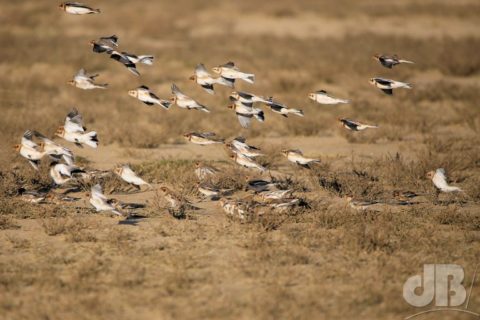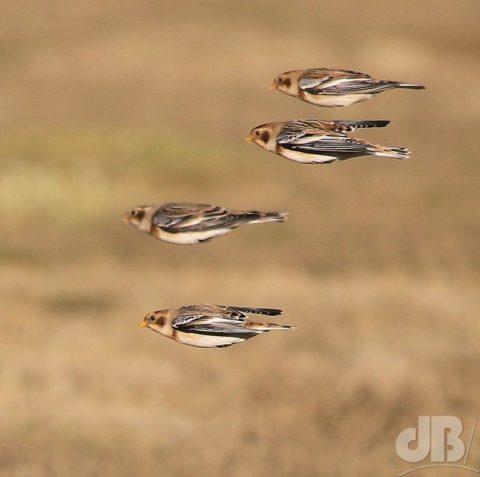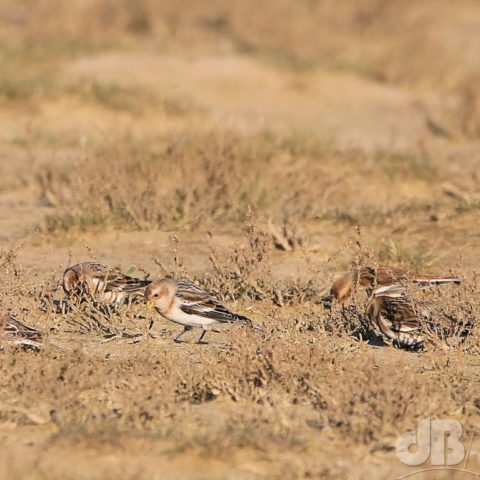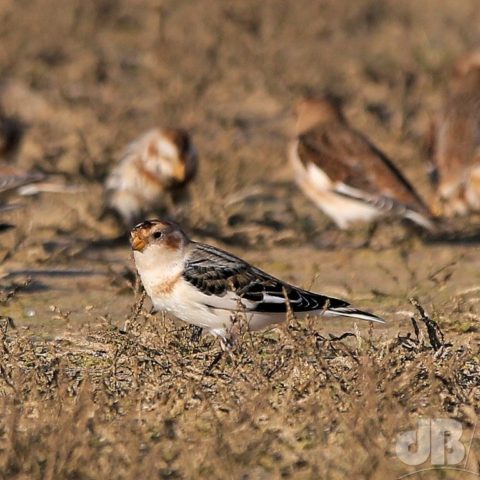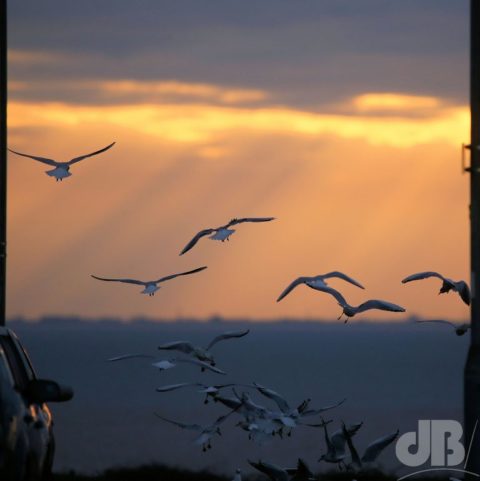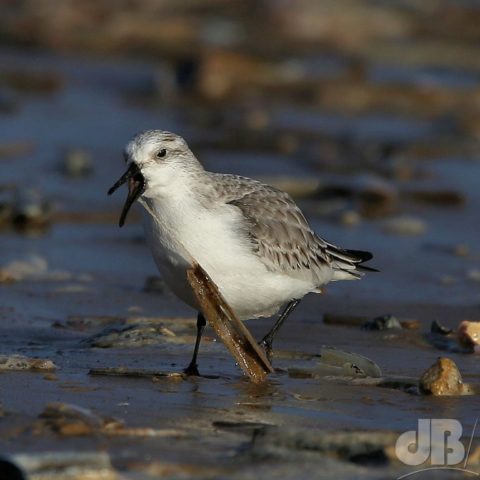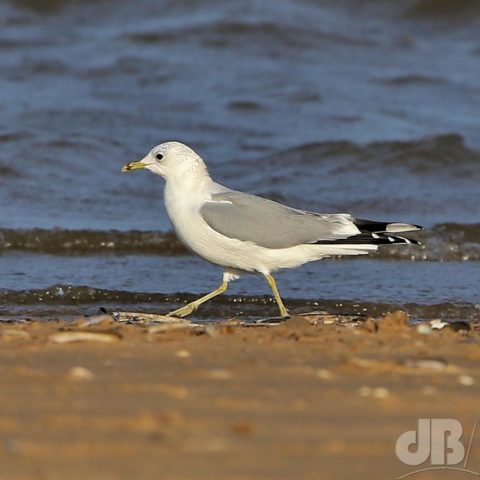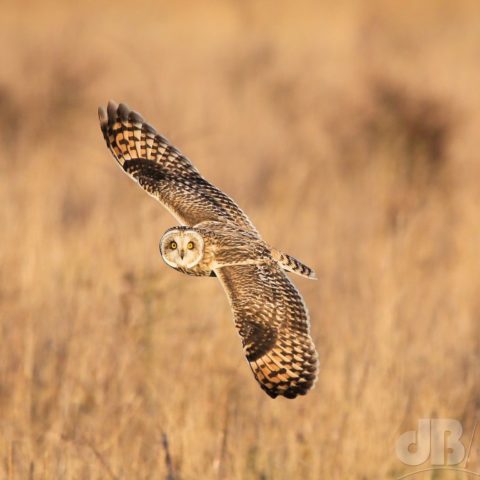
One evening in late November, I was once again, hoping to catch sight of the Starling murmurations that occur over the Broad Lane balancing pond. As mentioned in a previous, issue the local Starlings and their continental counterparts will often roost in the reed bed there, last winter there were literally thousands. At the time of writing, just a few hundred are roosting, but that can change on a wind as arrivals from Europe turn up when the weather changes. Anyway, reader Alison waved as she passed the pond on her dog walk. I later heard that she’d seen a scuffle between a Kestrel and a Barn Owl close to the Fen Bridge. Typical, I thought, for me to miss the avian action.
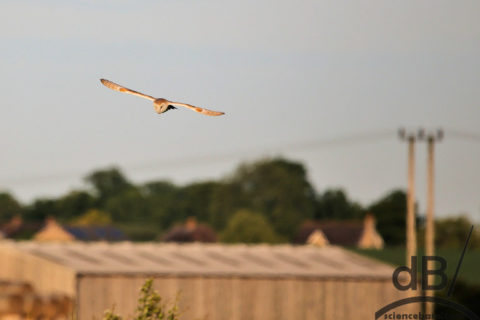 Barn Owl over a barn at Rampton
Barn Owl over a barn at Rampton
Anyway, there are quite a few barn owls to be seen on the outskirts of the village. These dusk hunters of silent flight will range along the Cottenham Lode (a fenland drain), across rough fields, and alongside roads. Often you will see a ghostly Barn Owl sidle up alongside hoping to home in on voles and other small rodents turfed out of the undergrowth by the rumbling of tires, even on the fresh tarmac of Beach Road.
There are other owls around; while videoing a starling murmuration over Rampton, I could see a Barn Owl in the field, but could hear a little owl in the hedge in which the starlings were hoping to roost. There was little chance that they would settle until the owls had departed, which eventually they did. The whole point of the murmuration, aside from the socialising, is to reduce the risk to the individual bird of being picked off by a bird of prey, such as a peregrine falcon, or perhaps an owl. The Little Owl is not a native species, it was introduced to the British Isles in the nineteenth century.
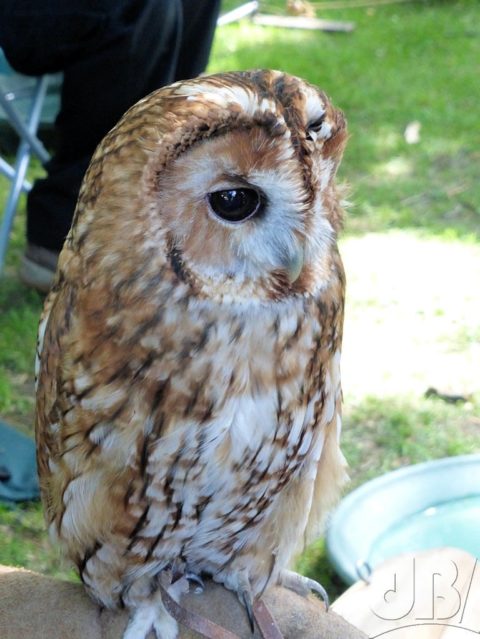 Rescued Tawny Owl at Fen Edge Festival 2019
Rescued Tawny Owl at Fen Edge Festival 2019
Meanwhile, there are places around the village, such as The Green where there are tawny owls to be heard, and if you’re very lucky and keen-eyed, perhaps even seen. Like the Barn Owl the Tawny Owl has very dark eyes, which help it see even in low light, and coupled with its excellent directional hearing make it a mean night hunter. Tawnies pair up from about the age of one year and stick together, monogamously. Famously, their call – the stereotypical “too-wit, woo-ooh” is two birds calling almost in the style of Nelson Eddy and Jeanette MacDonald. The female calls “too-wit” and the male responds by wooing her.
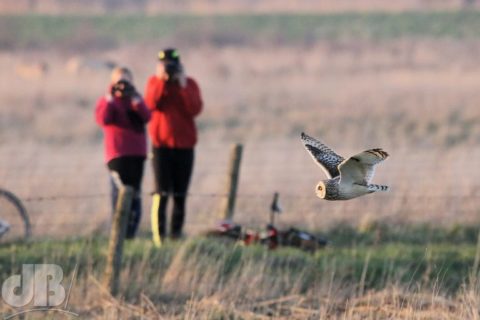
There are a few Long-eared Owls across East Anglia and the East Midlands although numbers are greater further north. Some readers may have been lucky to catch a glimpse of a vagrant Snowy Owl on the north Norfolk coast at RSPB Snettisham in March 2018. You have a greater chance of seeing the Short-eared Owl, however. This migratory species flies in from Scandinavia, Russia, Iceland, and we are lucky enough to have a patch of land not too far away where they can be seen hunting at dusk. Last winter, half a dozen or so “shorties” were often seen hunting at NT Burwell Fen and Tubney Fen, which are accessible by road from Burwell or on foot or cycling from Wicken Fen.
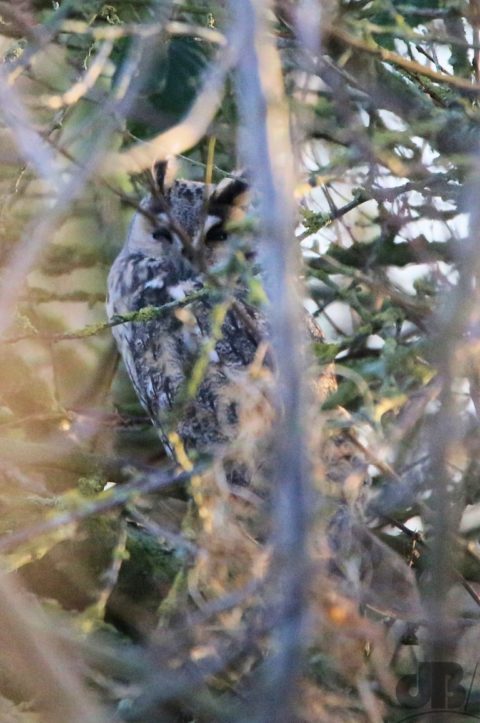
One of last winter’s shorties suffered a wing injury, and spent the summer on the Fen; it can still fly well, but presumably it felt that a trip back to the Steppes was not on the cards. As I write, this I have visited the fen twice this winter to see the shorties and reckon that there are four or so present. The numbers may have risen by the time you read this in early February. But, if you are reading it later in the year, beyond March, early April, you will have probably missed the chance to see them until next winter. Birding is very much about chance, timing, weather, and plain-old luck.

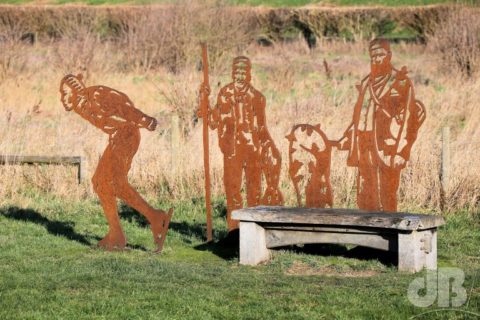
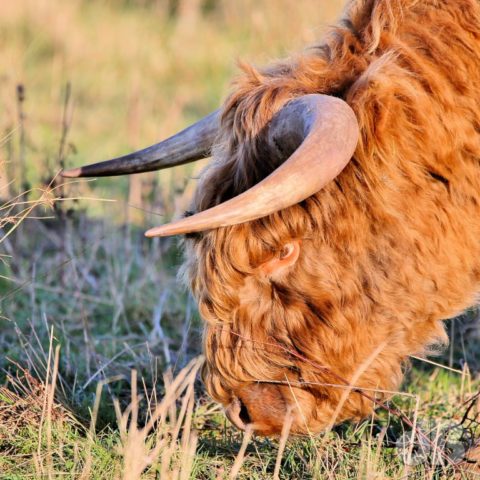
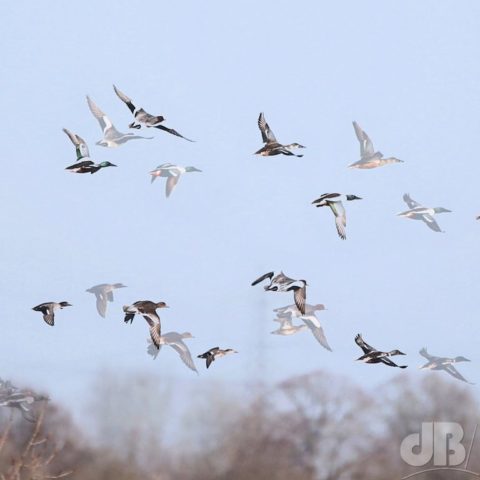
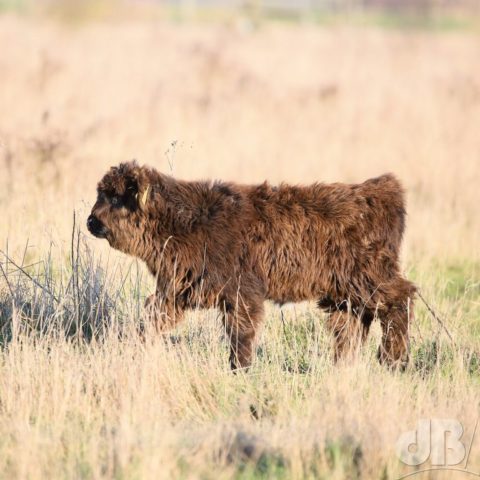
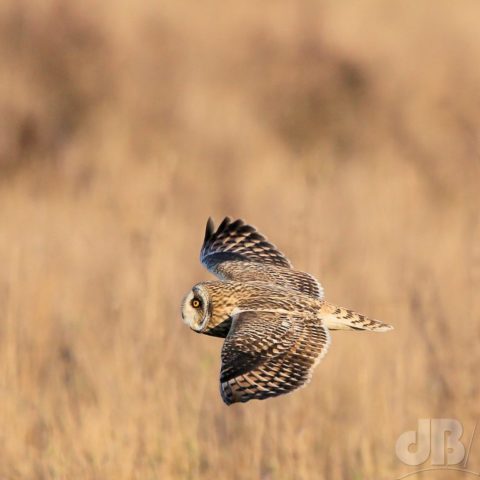
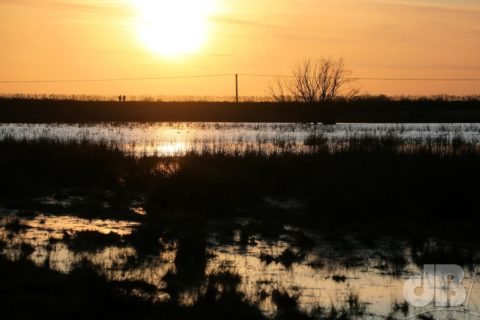
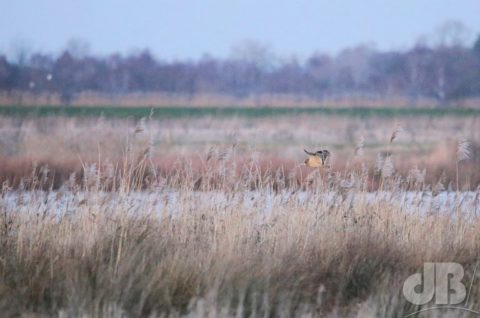
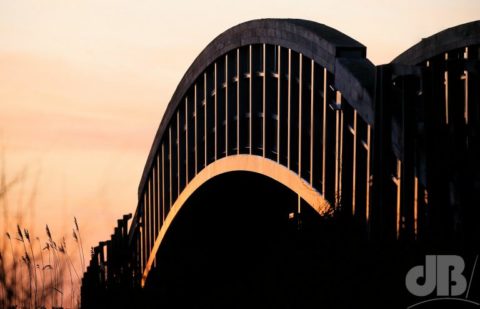

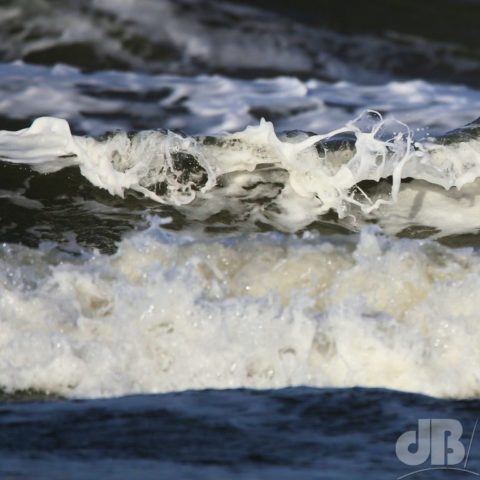
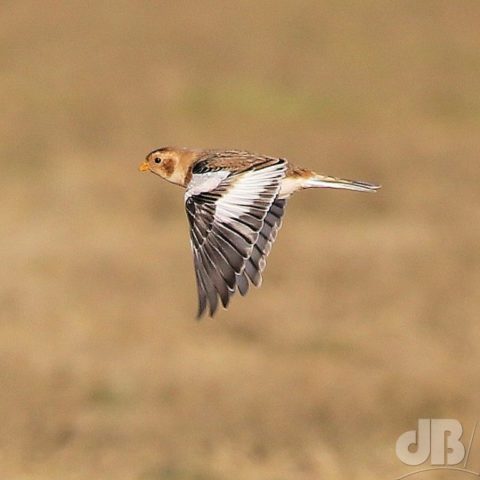 Second trip of the year to the North Norfolk coast. A much brisker, sunnier day than our New Year’s Day trip to RSPB Titchwell. Hoped to see Shorelarks, but apparently there are only five around the beach at Holkham at the moment and even the hardiest of birders who spent all day waiting yesterday saw none. We did, however, see 60 or so Snow Buntings, Plectrophenax nivalis.
Second trip of the year to the North Norfolk coast. A much brisker, sunnier day than our New Year’s Day trip to RSPB Titchwell. Hoped to see Shorelarks, but apparently there are only five around the beach at Holkham at the moment and even the hardiest of birders who spent all day waiting yesterday saw none. We did, however, see 60 or so Snow Buntings, Plectrophenax nivalis.